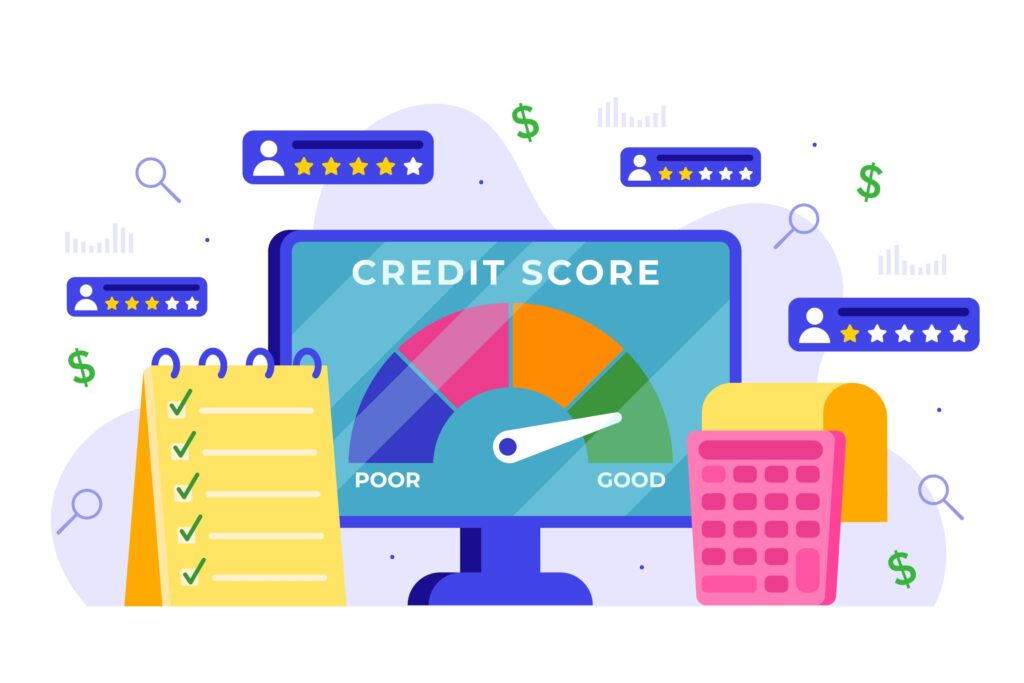Learn how to use balance transfer checks to consolidate credit card debt onto a 0% APR card. Save money on interest and pay off balances faster with these strategic tips.

Balance transfer checks are a useful financial tool that allows you to transfer debt from a high-interest credit card to a card with a lower interest rate. This can help save money on interest charges and pay off debt faster.
Table of Contents
In this comprehensive guide, we will cover everything you need to know about balance transfer checks, including:
- What are balance transfer checks and how do they work
- Pros and cons of using balance transfer checks
- Balance transfer fee and APR considerations
- Eligibility requirements and credit score impacts
- Strategies for maximizing savings with balance transfer checks
- Step-by-step process for requesting and using balance transfer checks
- Alternatives to balance transfer checks
Follow along for tips on how to leverage balance transfer checks to crush credit card debt.
What Are Balance Transfer Checks?
Balance transfer checks are checks sent by credit card companies that allow you to pay off debt from another credit card [2]. Essentially, you can use a balance transfer check to “transfer” your existing credit card balance to a new credit card.
The key benefit is that the new card likely has a lower interest rate, allowing you to save money each month and pay off your debt faster. Balance transfer checks make it easy to consolidate multiple high-interest debts onto a single low-interest card.
For example, let’s say you have $5,000 of credit card debt sitting at a 19% interest rate. You recently opened a new credit card with a 0% intro APR for the first 12 months. The credit card company sends you balance transfer checks that you can use to pay off your old 19% debt.
By transferring the balance to the 0% APR card, you avoid paying expensive interest charges for an entire year—saving you money each month. And more of your payments now go directly toward paying off the principal debt amount.
Balance transfer checks provide an easy way to do this without having to withdraw cash advances or shuffle money between accounts.
Pros of Balance Transfer Checks
There are many potential benefits of using balance transfer checks strategically:
1. Save on interest charges
The top reason to use a balance transfer is to reduce interest fees. Transferring debt from a 19% APR card to one with a 0% introductory rate for 12 months can add up to hundreds in savings. This gives you more money to accelerate debt payoff.
2. Consolidate multiple debts
Rather than tracking several credit cards, you can use balance transfer checks to consolidate debt onto a single card with more preferable terms. This simplifies tracking and managing monthly payments.
3. Improve the organization of finances
Consolidating debts with balance transfer checks can help you better understand exactly how much you owe across all accounts. With everything in one place, you can budget, prioritize, and optimize payoff strategies.
4. Flexible use of funds
Most balance transfers offer checks with no preset spending limitations. This gives you flexibility in determining the optimal way to distribute funds across existing debts.
5. Ease of use
Requesting and using balance transfer checks involves minimal effort. You don’t have to shuffle money between accounts or withdraw cash advances. The process is straightforward and user-friendly.
Cons of Balance Transfer Checks
However, there are a few potential downsides to consider as well before requesting balance transfer checks:
1. Balance transfer fees
Most balance transfer offers charge an upfront balance transfer fee, usually 3% to 5% of the total transfer amount. So $5,000 transferred would incur $150 to $250 in fees. This reduces the total savings, but likely still saves money over high APR costs.
2. Deferred interest
If you don’t fully pay off the transferred balance by the end of the 0% APR intro period, you retroactively owe interest for the duration of time since the transfer. Standard APRs after the intro period tend to be quite high.
3. Impacts credit score
Balance transfers show up on your credit report and the hard inquiry from applying can ding your credit score a few points initially. However, this impact tends to fade after a few months and scores rebound.
4. Chance of rejection
Issuers may deny balance transfer requests depending on your credit score or debt-to-income level. The transfer checks have no guarantees until the issuer approves funding the transaction.
Overall, when used deliberately, the pros often exceed the cons for most people with credit card debt. But consider your specific financial situation when deciding if balance transfer checks align with your payoff priorities.
Balance Transfer Fee and APR Details
If you plan to utilize balance transfer checks, pay close attention to the associated fees and ongoing APR details:
Balance Transfer Fee
Expect to pay a one-time balance transfer fee equal to 3% to 5% of the total check amount used. Some cards charge $5 minimums. Rarely, select cards offer fee-free transfers.
Intro 0% APR Duration
Cards advertise intro 0% APR periods ranging from 12 to 21 months on balance transfers. Aim for at least 12 months to allow time to repay.
Post Intro-Period APR
Once the intro 0% APR period ends, the remaining balances incur the standard card APR, usually between 16% and 25%. Factor this in when budgeting payoff timelines.
Deferred Interest
If you don’t fully repay the transferred balance before the intro period expires, you retroactively owe interest for the duration since the original transfer date. Carefully track payoff progress.
Compare balance transfer offers across multiple cards to find the best overall value aligning fees, intro APR length, and post-intro APR rates with your budget and goals.
Balance Transfer Check Eligibility
Issuers determine eligibility for balance transfer checks based on certain credit requirements:
Credit Score

Most cards require at least good credit—FICO scores of 690+—for approval odds. Some set bars at 660+ scores. Excellent credit in the 750+ range gives you optimal approval chances and limits.
Income Thresholds
Lenders often want an income of $20,000+ per year at minimum. However, high credit scores can offset lower incomes in some cases when qualifying.
Low Utilization Rates
Keep credit card balances below 30% of spending limits whenever possible. High debt-to-limit ratios negatively impact eligibility.
Clean Payment Histories
Avoid late payments whenever possible and keep late fees below five across all cards over the past few years. Delinquencies hurt applications.
Meeting these common benchmarks gives you strong chances for approval and larger balance transfer limits. Check your latest credit reports and scores to gauge where you stand presently.
While simply applying won’t drastically hurt scores, getting denied can impact ratings. Use eligibility pre-qualification tools to check your chances first without formal applications counting as hard inquiries until officially approved.
How Balance Transfers Impact Credit Scores
When used deliberately, balance transfer checks likely won’t devastate credit scores. Expect a modest short-term hit upfront. However, effects tend to fade after a few months as balances decrease.

Here’s how requesting and using balance transfer checks impacts scores:
5 to 15 Point Hit from Hard Inquiry
When first applying for cards offering balance transfer checks, the hard inquiry causes a small 5 to 15 point ding. Inquiries fall off reports after two years.
10 to 30 Point Hit from Lower Age of Accounts
Opening a new credit card lowers your average age of accounts—a factor in credit algorithms. This can lower scores by 10 to 30 points initially depending on your profile.
Offsetting Score Boosts
As you pay down debts with the transferred balances, your utilization ratios fall across cards. This actually boosts scores over time—offsetting initial declines.
Be sure to make payments on time going forward. Delinquencies trying to juggle payments across multiple cards can sharply lower scores by up to 150+ points.
Overall, expect modest short-term score drops but offsetting boosts over time as balances decrease through strategic use of low and 0% APR transfer checks.
Strategies to Maximize Savings from Balance Transfers
Follow these tips and strategies to maximize value when leveraging balance transfer checks:
1. Shop Around for Best Terms
Compare balance transfer offers across multiple cards—both intro 0% APR duration and post-intro APR—and fees to find the optimal overall savings and timeline aligning your goals.
2. Transfer Highest APR Debt First
If consolidating from multiple cards, transfer debt from the accounts charging the highest interest rates first to save the most monthly.
3. Make Payments Before Intro Period Ends
Carefully calculate the minimum monthly payments needed to fully repay the transferred balances before high deferred interest kicks in post-intro-period.
4. Pay More Than Minimums to Accelerate Payoff
Once balances are consolidated, strive to pay more than the minimum due toward balances each month in order to pay off debt faster and save overall on interest.
5. Avoid Billing Cycle Issues by Paying New Card Directly
After transferring balances, make sure all future payments go toward the new balance transfer card itself to prevent issues across billing cycles.
6. Temporarily Freeze Old Credit Card Accounts
Consider freezing old card accounts with transferred balances at $0 spending limits to avoid racking balances back up before finishing payoff.
Thoughtfully leveraging these balance transfer best practices lets you maximize value from 0% intro APR checks and crush credit card debt fast.
Step-by-Step Guide to Getting and Using Balance Transfer Checks
Follow this simple process for seamlessly getting and utilizing balance transfer checks:
Step 1: Compare Card Offers and Apply for New Credit Card
Use online tools to evaluate balance transfer cards across fees, 0% terms, post-intro APRs and get pre-qualified to avoid hard credit checks until approved officially. Submit an application likely requiring good 690+ credit score for approval odds.
Step 2: Receive New Card and Balance Transfer Checks
If approved, you’ll receive your new card by mail within 7 to 10 business days typically. Balance transfer checks often come as a separate mailing around the same timeline.
Step 3: Review Balance Transfer Details and Fine Print
Carefully review all balance transfer terms and conditions before using checks, including:
- Fees for transfers
- 0% intro APR length
- Post intro-period APR
- Minimum payment requirements
Understand key rules and eligibility criteria before transferring balances.
Step 4: Use Balance Transfer Checks to Pay Down Debts
Fill out balance transfer checks made payable directly to your old credit card issuers tied to the accounts you want to pay down. Always alert issuers when making large payments with checks not tied directly to related accounts.
You can make partial payments across multiple old card balances or fully pay off debts—depending on your strategic goals.
Step 5: Continue Making Monthly Payments
In the future, be sure all monthly payments made align with the new balance transfer card itself to pay off transferred balances by the end of the 0% intro-period deadline. Set payment reminders if necessary.
Alternatives to Balance Transfer Checks
For those who don’t qualify for balance transfer checks or want to consider other options, here are a few alternatives:
Direct Balance Transfers
Rather than checks, you can ask issuers to directly transfer balances from one card to another electronically. Fees, rates and terms are usually comparable for direct transfers.
Personal Loans
Unsecured personal loans often offer lower fixed rates than credit cards—but require monthly installment payments. Useful when wanting to consolidate and lock in low rates through the payoff period.
Credit Card Refinancing
Some issuers let you refinance existing credit card balances with a new card with lower rates. Similar to balance transfers but done as internal product conversions.
Peer-to-Peer Loans
Borrowing money from peer-lending networks can provide lower rates than high-interest credit cards. This lets you consolidate and repay one fixed loan vs multiple debts.
The Bottom Line
When used responsibly by those with qualifying credit, balance transfer checks offer a straightforward way to consolidate and repay credit card debts faster. Make sure to weigh the pros and cons aligned to your financial situation.
Strategically maximizing value from low intro 0% APR periods can save substantially on interest fees over time as you crush existing balances. Just carefully budget payoff timelines before high deferred interest kicks in down the road post-intro period.
Faqs about Balance Transfer Checks :
Can you use a balance transfer check to get cash?
Yes, some balance transfer checks can be cashed or used towards cash advances, but expect to pay much higher interest rates and fees compared to basic balance transfers. I’d explore lower-interest loan options first before paying 20%+ on cash from checks.
Can I use a balance transfer to pay the mortgage?
You typically can’t directly transfer balances to pay down the mortgage principal. However, some lenders let you take out home equity loans/lines to consolidate high-interest debts under your mortgage. Consider both the pros and cons before essentially refinancing or “transferring” other debts into your home’s equity.
Can I use a balance transfer to pay off my car loan?
Sadly, automotive lenders rarely accept direct balance transfers from credit cards due to differences in underwriting models. However, some banks do offer competitive refinancing options worth exploring to lower existing auto loan rates.
Who offers balance transfer checks?
Nearly all major banks and credit card issuers like Chase, Citi, Capital One, Wells Fargo, and Bank of America provide balance transfer check options with new card applications nowadays [4]. Compare your top picks across intro 0% APR lengths, post-intro rates, and fees.
Are balance transfer checks a good idea?
Balance transfer checks provide an easy way to consolidate debts onto one card with a lower interest rate intro period [5]. Just be sure to budget payoff timelines before high deferred interest kicks in. Used properly, checks save substantially on interest payments.
Can you write balance transfer checks to yourself?
Technically you can write a check to yourself and deposit it into another bank account you own, but it likely won’t qualify as a balance transfer with the associated low rates [1]. You typically need to pay down debts from a separate distinct creditor to get the 0% intro APR.
What are the main elements of balance transfer checks?
Key check elements include the ability to pre-fill your name/address, the amount paid, account numbers, payment mailing details, and issuer/processor tracking codes [2]. The checks simplify consolidating debts onto the new lower APR credit card.
What is a maximum number of balance transfer checks?
Most issuers provide between 2 to 4 physical checks, with options to request more if needed [3]. So you can split one large balance across multiple checks or pay down multiple card balances in separate transactions up the to the designated limit.
Where to check original balance transfer checks?
You can view original cleared check images under the statements section for the account tied to the completed balance transfers [4]. If checks got lost, contact the card issuer to verify details on processed transfers.
🌐 References:
1. Investopedia
2. WalletHub

